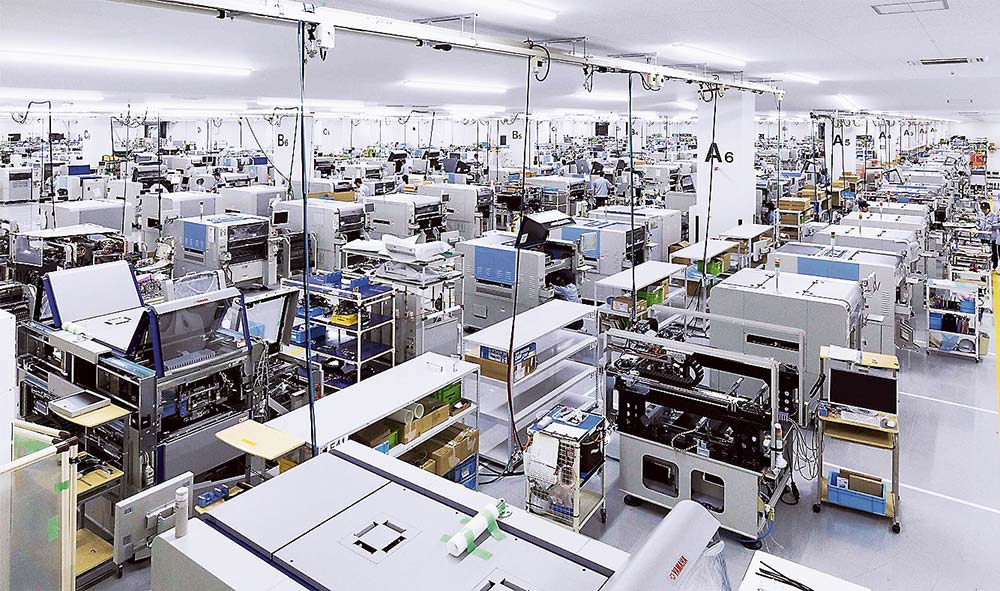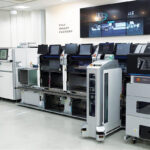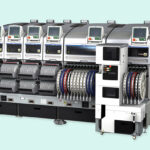ASIA ELECTRONICS INDUSTRYYOUR WINDOW TO SMART MANUFACTURING
Unique Trends Yield Positive Manufacturing Prospects
In 2022, megatrends such as electric vehicles (EVs), internet of things (IoT), carbon neutrality, and digital transformation (DX) will accelerate demand for electronics equipment. The manufacturing industry, centering around factory automation and manufacturing equipment, will grow steadily at the same level as in 2021. Nonetheless, there are challenges remain in the procurement of components.
In 2021, vaccination efforts against the novel coronavirus disease (COVID-19) have somehow brought normalization to the global economy. With this, the manufacturing industry that lost track in 2022 recovered slowly in China, other parts of Asia, the United States, countries in Europe, and in Japan. Investments in plants and equipment gathered steam.
Positive Prospects
Accordingly, the world has seen the birth of new era triggered by new demand in information technology (IT) devices, production automation, and electrification of vehicles. Consequently, these trends also go hand in hand with the proliferation of fifth generation (5G) communications, advancement of IoT, efforts to achieve carbon neutrality, digitalization, and changes in work style.

These changes have necessitated manufacturers to make new investments in plants and equipment, driving the increase in demand for FA and manufacturing equipment.
Akihiro Teramachi, President and Chief Executive Officer of THK Co., Ltd. shares his prospects for 2022 in the manufacturing industry. “The steady production of automobiles will have impact on the demand for FA (factory automation) equipment. While many see supply chain issue of components will continue until the middle of 2022, there are concerns economy will slow down in the first half of 2022,” said Teramachi.
“Nonetheless, if the industry will be able to address supply chain issue, we can expect the same level of demand for FA equipment in 2022, similar to what we have witnessed in the previous year,” said Teramachi.
Shinsuke Suhara, President & Chief Operating Officer of FUJI Corporation, said, “I expect that the demand will steadily increase, although procurement of components will present a problem. As we have sufficient production capacity, we will go all out to secure components.”
Tomoaki Kotani, Group Vice President, Industrial Products Marketing Division, Factory Automation Systems Group, Mitsubishi Electric Corporation, said, “I think active investments in EVs and lithium-ion rechargeable batteries will continue. For semiconductors, we expect greater investments than in 2021. Although we do not know yet how far the industry can address supply chain issue, the FA industry will be able to maintain high level of growth in 2022.”
Manufacturers Accelerate Open Innovations
Manufacturers have been accelerating open innovations. Nobushige Kondo, President of NITTOKU Co., Ltd., said, “In Japan, there are many companies with excellent element technologies. Nonetheless, it is difficult for small- and medium-sized single-company in Japan to survive the global competition.”
“Combining technologies of respective companies will enable them to provide systems that meet the needs of the global market instead of individual products of respective companies. Thus, they can enhance added values of those technologies.”
Kondo added small- and medium-sized companies will be able to find new opportunities by promoting breakthrough strategies through open innovations with unique companies with original technologies and production know-how.
Open innovations through collaborations among manufacturers in the private sector, as well as collaborations among industry, government, and academia, have been advancing. New industrial bases can emerge by combining findings possessed by universities and manufacturers’ technological resources.
Government, Academe Collaboration
Yaskawa Electric Corporation opened in March 2021 Yaskawa Technology Center, a research and development base. Clearly, the aim of consolidating its group’s technology development to accelerate open innovation through industry-government-academia collaboration. It is on the premises of its headquarters in Kitakyushu-shi in Fukuoka Prefecture.
As part of efforts to promote research and development and nurture human resources using the center, the company started comprehensive collaboration with Kyushu University in June 2021.
Yamaha Motor Co., Ltd. has strengthened collaboration with Shizuoka University. Ultimately, it aims to solve issues at an early stage and create innovations using Shizuoka University’s comprehensive knowledge.
So much has been said on supply chain issue facing the manufacturing industry. To cope with semiconductor shortages, electronics trading companies and manufacturers are increasingly turning their eyes to China. The market is currently producing products using 50 to 20nm process technologies of one-generation ago in large volumes. At present, 50 to 20nm products are the most insufficient. There are also forecasts that the revisiting of supply chains will advance.




